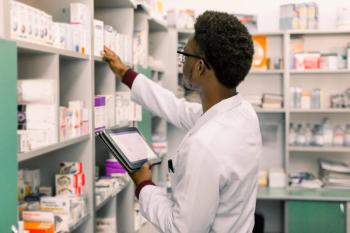
Improving drug safety via techs, e-Rxs, e-records
There are plenty of safety challenges relative to drug stores and the answers may rest with better trained staff, more patient information, and e-prescribing.
Drugstores get relatively little attention in the push for healthcare safety, probably for a good reason, said experts at a recent panel discussion: Pharmacy error rates are low, and computerization is likely pushing them lower. Nevertheless, there are plenty of safety challenges remaining, said the panelists at the National Patient Safety Congress held last month in Washington, D.C.
Even when physicians send Rxs electronically, most pharmacies don't have that information going directly into their computer, said Mark Rubino, R.Ph., M.H.A., chief pharmacy officer of Aetna. "So what does that mean? The pharmacist or the pharmacy technician takes the prescription off a fax machine." That leaves potential for error in the data entry by the pharmacy technician, he said.
James DeVita, director of quality and patient safety at CVS Corp., took exception to the characterization of technicians working almost independently. "That is certainly not the norm," he said. Technicians "don't work without oversight and without training. They don't fill prescriptions.... All the professional aspects of prescription filling, including final check, are done by a pharmacist." For techs, he said, "there is no national standard for training. But every state has requirements."
On the other hand, Michael Cohen, R.Ph., president of the Institute for Safe Medication Practices, said that although regulations call for pharmacists to check prescriptions, "Whether by mistake or by design, sometimes that doesn't happen.... We see some of the results of that, unfortunately."
Rubino said payers have no plans for requiring certification or specific training for technicians. He noted that Aetna itself uses techs for prior approval work. He argued that often errors come down to human factors, rather than inadequate training.
Do pharmacists get too little information about patients? Rubino noted there was previously a proposal before the National Business Group on Health to require the diagnosis be on the prescription, a plan called Dx on Rx. "That would eliminate a large portion of the medication errors, because when a pharmacist sees what the diagnosis is, that helps reinforce that it is the correct drug, correct dose, etc.," he argued.
Rubino lamented that the proposal was opposed by the pharmaceutical industry, in part, he believes, because payers might not pay for some off-label uses of drugs.
Cohen said that, particularly in light of serious adverse events in ambulatory care, he's bothered by the fact that community pharmacists often lack basic information, including patients' age, chronic conditions like diabetes, and allergies.
To address that, Rubino said, Aetna has combined its medical claims data with its pharmacy claims system so the company can alert physicians or pharmacists about potential problems. It is also launching a personal health record to include all of a patient's medications, no matter where they were obtained, as well as disease state information, so members can take that information to pharmacists or physicians.
It's federal law for Medicare patients to receive counseling at dispensing. In nearly all states, it's state law for all patients to get that counseling. "But it isn't happening-or at least only a small percentage of patients are being counseled," said Cohen. He stressed that one big problem is that the reimbursement system provides no incentive for counseling.
Newsletter
Pharmacy practice is always changing. Stay ahead of the curve with the Drug Topics newsletter and get the latest drug information, industry trends, and patient care tips.





























































































































